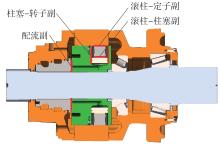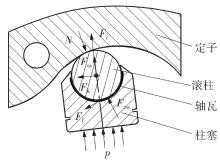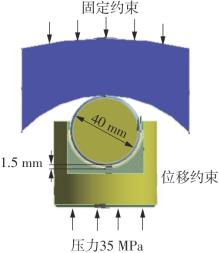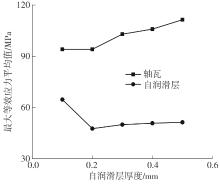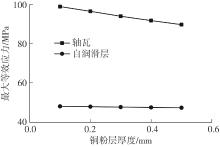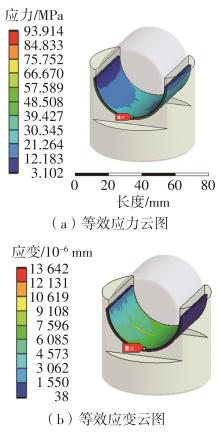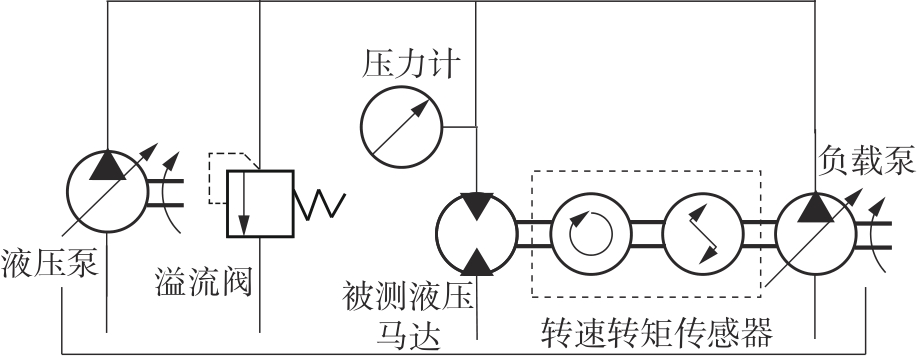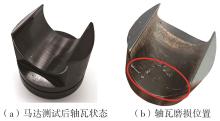华南理工大学学报(自然科学版) ›› 2023, Vol. 51 ›› Issue (11): 93-100.doi: 10.12141/j.issn.1000-565X.230413
所属专题: 2023年流体动力与机电控制工程
内曲线液压马达低应力三层复合轴瓦厚度分配
李莹1,2 王博众1 何双1 刘彦东1 张晋1,2
- 1.燕山大学 机械工程学院,河北 秦皇岛 066004
2.燕山大学 河北省重型机械流体动力传输与控制实验室,河北 秦皇岛 066004
Thickness Distribution of Low Stress Three-Layer Bearing for Cam Lobe Hydraulic Motor
LI Ying1,2 WANG Bozhong1 HE Shuang1 LIU Yandong1 ZHANG Jin1,2
- 1.School of Mechanical Engineering,Yanshan University,Qinhuangdao 066004,Hebei,China
2.Hebei Provincial Key Lab of Heavy Machinery Fluid Power Transmission and Control,Yanshan University,Qinhuangdao 066004,Hebei,China
摘要:
在低速大扭矩内曲线液压马达工作转速朝着极低转速(最低可达0.2 r/min)发展时,其核心摩擦副之一的滚柱-柱塞副由于低转速时难以建立润滑油膜而极易导致摩擦副磨损失效。因此,在滚柱-柱塞副之间通常设置钢背-铜粉-自润滑材料的三层轴瓦结构,以提高摩擦副的低速润滑能力。但内曲线液压马达通常需要承受较大负载,如何设计高承载能力的三层复合轴瓦成为内曲线液压马达设计的难点。三层复合轴瓦各层材料的厚度分配会直接影响轴瓦受载下的最大应力,进而影响内曲线液压马达的承载能力和使用寿命。为探究三层轴瓦各层厚度对复合轴瓦整体承载能力的影响规律,文中对三层复合轴瓦进行受力分析,得到了三层材料厚度与自润滑层最大等效应力的映射规律,提出了一种适用于内曲线液压马达滚柱-柱塞副的低应力三层复合自润滑轴瓦厚度分配方案,并针对一款最大工作压力为31.5 MPa的内曲线液压马达设计了三层轴瓦厚度分配方案(其自润滑层厚度为0.2 mm、铜粉层厚度为0.3 mm、钢背层厚度为1.0 mm),将采用该方案的三层复合轴瓦安装在液压马达上进行了马达性能测试。试验结果表明,该厚度分配下轴瓦承载能力满足内曲线液压马达最大工作压力的要求。
中图分类号:
